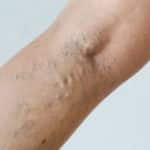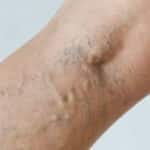All You Need To Know About Laser Tattoo Removal
Having second thoughts about your tattoo? Did you impulsively get a lower back tattoo while on a recent vacation? Or perhaps you permanently made a lasting declaration of everlasting love for a now ex partner? Maybe the tattoo artists had a bad day leaving a botched tattoo? If your tattoo no longer reflects you and you want it removed, you are not in the minority. A once bright and meaningful tattoo can quickly turn into a permanent reminder of an impulsive or inadvertent decision you might like to recall. Fortunately, tattoos are no longer as permanent, and people can turn to laser tattoo removal to de-ink their bodies. The top dermatologists at Short Hills Dermatology understand the process of laser tattoo removal and share insight into the process that you cannot afford to miss.
How The Laser Tattoo Removal Process Works
Contrary to what most people believe, laser tattoo removal does not actually ‘burn’ the tattoo off your skin. Instead, most of the tattoo removal process actually occurs naturally in our bodies. Laser tattoo removal involves breaking down the unwanted pigment from the tattoo by targeting the skin with short bursts of concentrated light. Once targeted by the laser, the ink particles begin to dissipate from the laser’s intensity. As the ink breaks down, the immune system naturally flushes these particles away from the tattooed area.
Is Laser Tattoo Removal Painful?
During the tattoo removal process, many people express some signs of pain or anxiety. Of course, some people can tolerate pain better than others, but any removal will generate some form discomfort. But not to worry as most doctors will make the procedure as comfortable as possible to minimize your pain.
Precautions Before Laser Tattoo Removal
There are precautions that you can take prior to and after the procedure to help reduce pain. You can reduce discomfort by cooling your skin with ice packs before and after treatment, thereby preventing the skin from becoming too hot. To further reduce discomfort, make sure you keep your skin hydrated by drinking plenty of water before your appointment. Your skin will respond better to laser treatment when hydrated properly.
Try avoiding caffeine in the days leading up to your appointment as caffeine increases sensitivity to pain. If experiencing discomfort during or after the treatment, your doctor may suggest that you take acetaminophen (Tylenol) to ease any discomfort. Make sure to avoid blood thinners like Ibuprofen (Advil) and Aspirin that can stall recovery. Also, you may ask your clinic about specific skin numbing methods available during treatment should you be anxious about the process.
What To Expect Post Laser Tattoo Removal Treatment
Recovery differs depending on the size, color, and location of your tattoo; but patients can expect a few milestones during the timeline of recovery. After treatment, carbon dioxide leaves the skin at an accelerated rate, causing the skin to turn a frosty white color. Do not panic! This is completely normal and expected. After the initial few days, the wound should begin to heal itself. This process will lead to blistering, scabbing, peeling, and irritation. Typically, these signs of irritation subside after 2-3 weeks. Once the 4-week mark approaches, most people heal in full, and by the 6th week, if necessary, most patients schedule a second session if needed.
The Laser Tattoo Removal Recovery Process
During the recovery process, use caution around the treated area in the same way you cared for a new tattoo. This means avoiding exercise or physical activity that can make your skin sweaty and irritated. You also should avoid tanning (sun, spray, or self-tanner) as this can further upset and disrupt the skin. However, if you come in contact with the sun (or simply can’t avoid it), sunscreen can help heal the area. Sunscreen minimizes changes in the pigments in your skin while also shielding it from harmful exposure. You can reduce the risk of infection by keeping your skin clean and showering regularly. Excessive or particularly rough washing can also lead to irritation. During the recovery process, you may notice blisters forming on your skin. Do not pop them. Treat them by applying dermatologist recommended ointment to avoid irritation or infection. Again, you may take Tylenol for pain treatment during the recovery process, but be sure to avoid Aspirin and Ibuprofen.
Removing A Tattoo
The American Society for Dermatologic Surgery (ASDS) reports that doctors performed nearly 100,000 tattoo removal procedures in 2011 and the number of tattoo removals increased by nearly 52% in recent years. You no longer have to regret a tattoo you despise or that does not reflect you. Residents living in northern New Jersey can learn more by contacting a board-certified dermatologist near you today.





